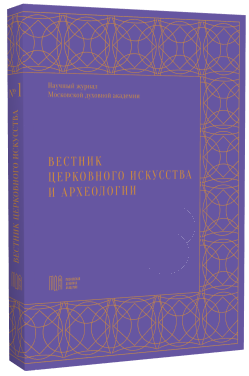Christian City as a Work of Art
DOI:
https://doi.org/10.31802/BCAA.2022.6.1.005Keywords:
Christian city, work of art, church art, religious aesthetics, visual semiotics, spatial iconAbstract
This article is an attempt to present a historical Christian city as a work of art. This approach may change our attitude to the city in general and lead us to stop treating it as a museum exhibit or a collection of static artifacts and move on to perceiving it as a complex work of art. The city, like any other work of art, is characterized by the presence of three dimensions: physical,
aesthetic, and semiotic. These aspects are not only analytically different, but mutually complementary. The traditional Christian city can be viewed as an integral material, aesthetic, and visual-semiotic construct. It is distinguished by an internally consistent structure, many artistic layers, and a performative character. The dynamics realized in the co-creation of the author and the recipient is a necessary property of such a cultural work. The religious meanings contained in a Christian city make it possible to qualify such a city as a “spatial icon” that combines several semantic (symbolic or narrative) layers. The attitude to a Christian city as a work of religious art allows not only to better understand its design, form, and composition, but also to organize a practically interested participation in its preservation and development.
Downloads
References
Аванесов С. С. Иконическое мировоззрение // Икона в русской словесности и культуре / под ред. В. В. Лепахина. М.: Музей русской иконы, 2017. С. 5–10.
Борев Ю. Б. Эстетика. М.: АСТ, 2005.
Иконников А. В. Архитектурный ансамбль. М.: Знание, 1979.
Иконников А. В. Художественный язык архитектуры. М.: Искусство, 1985.
Ингарден Р. Исследования по эстетике / пер. с польск. А. Ермилова, Б. Фёдорова; предисл. В. Разумного. М.: Изд. иностранной литературы, 1962.
Лебедев Л., прот. Москва патриаршая. М.: Вече, 1995. С. 285–332.
Лидов А. М. Иеротопия. Пространственные иконы и образы-парадигмы в византийской культуре. М.: Дизайн. Информация. Картография, 2009.
Лидов А. М. Пространственные иконы как перформативный феномен // Пространственные иконы. Текстуальное и перформативное: Материалы международного симпозиума / под ред. А. М. Лидова. М.: Индрик, 2009. С. 10–20.
Лихачёв Д. С. Историческая поэтика русской литературы. СПб.: Алетейя, 2001.
Палласмаа Ю. Мыслящая рука: архитектура и экзистенциальная мудрость бытия / пер. с англ. М. Химанен. М.: Классика ХХI, 2013.
Росси А. Архитектура города / пер. с ит. А. Голубцовой. М.: Strelka Press, 2015.
Сазонова Н. И. Христианский храм в городском пространстве и коллизия двух концепций города // Визуальная теология. 2019. № 1. С. 55–69.
Эко У. Отсутствующая структура: Введение в семиологию / пер. с ит. В. Резник, А. Погоняйло. СПб.: Symposium, 2006.
Downloads
Published
How to Cite
Issue
Section
Categories
License

This work is licensed under a Creative Commons Attribution-ShareAlike 4.0 International License.



